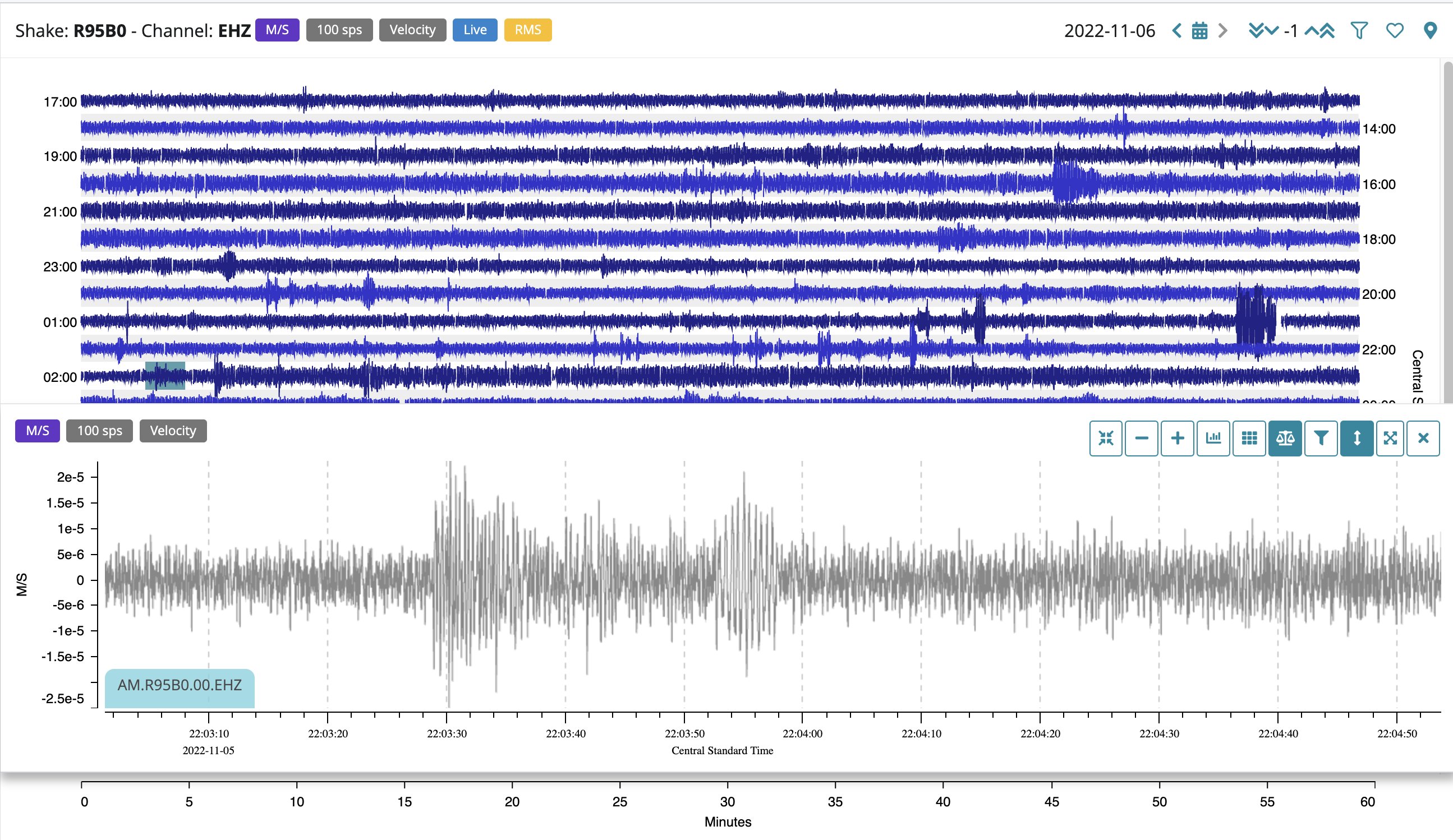LSU Geoscientists Analyze Fans’ Earthshaking Reaction to Win
November 07, 2022
Fans inside and outside Tiger Stadium erupted with excitement as they watched their team beat Alabama in overtime. At the same time, a seismometer on LSU’s campus captured the excitement, recording two distinctive seismic wave events. The first came at 10:03 p.m. after LSU football quarterback Jayden Daniels scored a touchdown from a 25-yard run. The second event came just minutes later at 10:06 when Mason Taylor caught the game-winning two-point conversion.

Seismograph reading when LSU's Jayden Daniels scored the overtime touchdown.
– Courtesy: LSU Geology & Geophysics department
As a land flagship university, LSU is constantly collecting data, measuring the Earth's
movement and the energy sources causing the movement. Darrell Henry, interim chair
of the LSU Geology & Geophysics department and Patricia Persaud, Geology & Geophysics
associate professor, analyzed the seismograms.
What did the LSU seismometer pick up on Saturday night during the football game?
Darrell Henry: You're looking at seismic waves that go through the ground. They don't go through
air. The shaking is a function of the energy that's been released. You're getting
a sense of the energy that's released from all these people jumping up and down and
yelling. When you see different amounts of energy, you get higher magnitude wiggles,
so the seismometer picks up the vertical motion from the reaction to the LSU touchdown.
This touchdown showed the greatest magnitude response lasting about 10 seconds.
Patricia Persaud: The seismogram is the wiggles. The signal is showing the prolonged activity of the
movement in the stadium. These are not earthquakes. Not every signal that we can measure
related to movements of the ground is due to an earthquake. It shows that you can
actually observe signals related to the movement of the crowd. This isn’t limited
to just inside the stadium either but the people outside of Tiger Stadium as well.
It’s impressive too, because the instrument itself is NOT located in the stadium.
Looking at the results, how would you compare the intensity of these waves to a typical
reading?
Henry: You can definitely see that it produced a very distinctive event that could be measured
very easily with the seismometer. It's really very significant, and it’s closer to
10 times more than what we would normally see there. It's a significant event, and
the ground motions at the instrument were measurable.
How does this compare with other events like the recent Garth Brooks concert?
Henry: There were a series of seismic waves related to the Garth Brooks concert when he sang “Callin’ Baton Rouge.” Those waves were longer and more sustained likely because of the length of the song.


